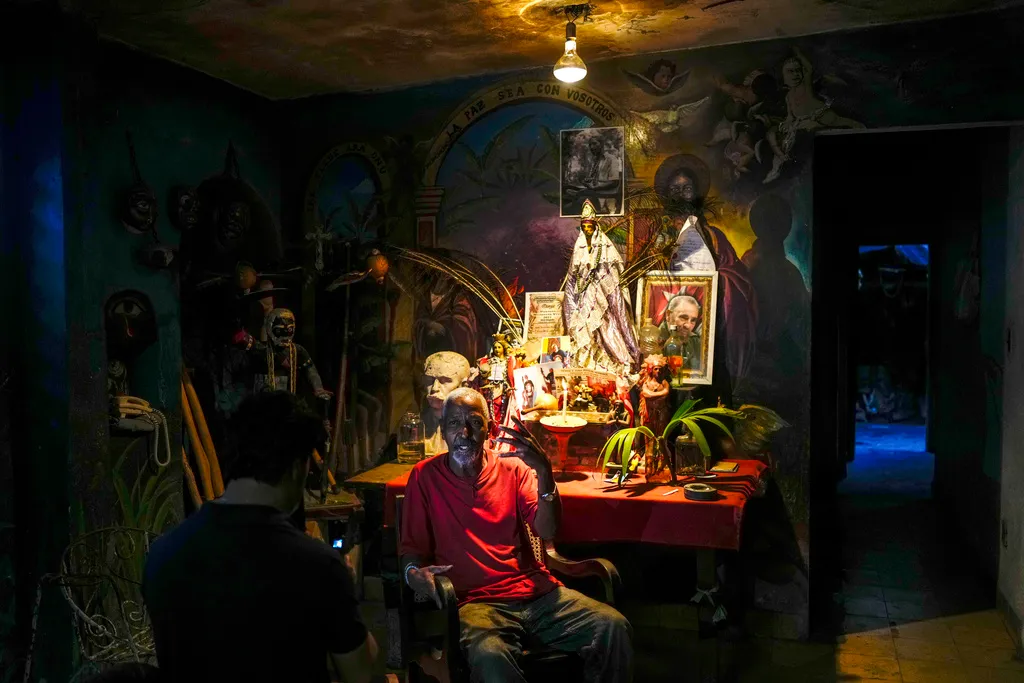Despite a history of atheist government policies, Cuba has experienced a remarkable resurgence in religious diversity over the past 65 years. Today, religious practices from various traditions coexist and flourish across the island, reflecting a vibrant tapestry of belief and spirituality.
Diverse Religious Practices
- Santería: One of the most prominent religions in Cuba, Santería blends Catholicism with Afro-Caribbean traditions. It originated as a form of resistance among African slaves who were forced to adopt Catholicism. Today, it remains a vital part of Cuban culture, with practitioners engaging in rituals that involve drumming and dance.
- Catholicism: Although the Cuban government once sought to replace the Catholic Church’s influence, Catholicism remains a significant faith on the island. Churches ring bells, and Catholic practices continue alongside other religious observances.
- Islam: The Muslim community in Cuba has grown since the opening of the only mosque in Havana in 2015. The community now includes approximately 2,500 individuals nationwide, working to spread understanding and acceptance of their faith.
- Buddhism: Buddhism has found a niche in Cuba through the Soka Gakkai organization, which has grown from a small group to about 500 members. Buddhists gather in homes like that of Cuban jazz musician Cesar Lopez and his Japanese-born wife Seiko Ishii for meditation and spiritual growth.
- Judaism: Jewish traditions continue in Cuba with a blend of Cuban culture. Although the Jewish population has decreased from a peak of 15,000 in the 1950s to about 1,000 today, the community remains active, celebrating Jewish customs with a Cuban twist.
Historical Context and Current Landscape
The 1959 Castro-led revolution established an atheist, Communist government that initially sought to diminish religious influence. The government’s policies led to the expulsion of foreign priests, the nationalization of private schools, and the repression of religious practices. However, in recent decades, there has been a notable shift.
- Constitutional Changes: In 1992, Cuba removed references to atheism from its constitution, marking a significant change in its approach to religion. Pope John Paul II’s visit in 1998 further paved the way for increased religious tolerance, allowing for the celebration of Christmas and other public religious events.
- Current Challenges: Despite progress, Cuba faces criticism for its restrictions on religious freedom. The U.S. State Department has designated Cuba a “Country of Particular Concern” for violations of religious freedom, noting issues such as the requirement for religious groups to be officially registered and the withholding of registration from certain groups.
- Religious Revival: Experts and religious leaders view the current period as one of religious revival, attributed to a combination of factors including the involvement of evangelical Protestants, frustrations among Cubans, and a shift in government attitudes.
Voices from the Community
- Jaime Suchlicki: Former director of the University of Miami Institute for Cuban and Cuban-American Studies, Suchlicki suggests that the revival of religion in Cuba may be due to a mix of evangelical influence, Cuban frustrations, and increasing government tolerance.
- Monsignor Ramon Suarez: Chancelor of Havana’s Catholic archdiocese, Suarez notes that Cubans often practice multiple faiths without conflict, reflecting the island’s unique religious landscape.
- Ahmed Aguero: A leader at Havana’s mosque, Aguero highlights efforts to dispel misconceptions about Islam and foster understanding within the Cuban community.
- Yasmel Quintana: A Buddhist practitioner, Quintana describes how Buddhism has become a source of spiritual identity and growth for him and his twin brother.
FAQ
1. What is Santería and how did it originate? Santería is a religion that blends Catholicism with Afro-Caribbean traditions. It originated among African slaves in Cuba who combined their Yoruba deities with Catholic saints.
2. How has Cuba’s religious landscape changed since the 1959 revolution? Initially, the government repressed religious practices, but in recent decades, there has been increased tolerance and revival of various religions.
3. What are some of the challenges to religious freedom in Cuba today? Challenges include the requirement for religious groups to be officially registered and the withholding of registration from certain groups. The U.S. State Department has criticized Cuba for severe violations of religious freedom.
4. How has the Catholic Church’s role evolved in Cuba? The Catholic Church, once suppressed, has seen a resurgence in public presence since the 1990s, with increased acceptance of religious events and celebrations.
5. What role do other religions, such as Islam and Buddhism, play in Cuba? Islam and Buddhism have growing communities in Cuba, with the establishment of a mosque in Havana and a significant presence of Soka Gakkai Buddhism.
6. How does Cuba’s religious diversity reflect on its cultural landscape? Cuba’s religious diversity is a testament to its rich cultural heritage, showcasing how various faiths and practices coexist and influence each other in everyday life.


